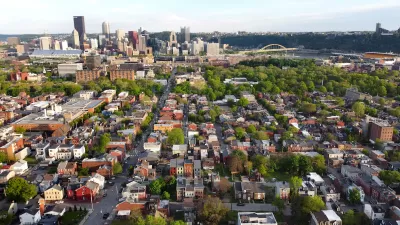Around the world, people continue to move toward urbanized areas in search of opportunity. Developing megacities and megaregions must plan ahead for the continued growth, according to Bloomberg.
Faced with the prospect of a larger and larger share of humanity moving to developed areas of the world, Peter Coy writes an article suggesting that "sprawl can be beautiful," if growth is managed well.
Coy's concern is with the growth of sprawling megacities, like Dhaka, Lagos, Manila, and Rio de Janeiro, countering those in rich western cities who romanticize "the ingenuity and perseverance of slum dwellers."
Coy is following the lead of a 2011 article from the McKinsey Global Institute titled "What’s the biggest limit on city growth? (Hint: it’s not steel or cement).” The answer to the trivia question, Coy explains, is management. New York, Paris, and Tokyo were all ungovernable at points in their development, says Coy, and developing megacities don't currently have the same advantages that now established cities had at similar points in their development.
As examples of better management and planning in developing cities, Coy points to Curitiba, with the leadership of Jaime Lerner, and Valledupar, in Colombia. The latter provides a repeated touch point throughout the article.
FULL STORY: Sprawl Can Be Beautiful—if Cities Learn to Manage Growth

Planetizen Federal Action Tracker
A weekly monitor of how Trump’s orders and actions are impacting planners and planning in America.

Congressman Proposes Bill to Rename DC Metro “Trump Train”
The Make Autorail Great Again Act would withhold federal funding to the system until the Washington Metropolitan Area Transit Authority (WMATA), rebrands as the Washington Metropolitan Authority for Greater Access (WMAGA).

The Simple Legislative Tool Transforming Vacant Downtowns
In California, Michigan and Georgia, an easy win is bringing dollars — and delight — back to city centers.

Supporting Cycling Takes More Than Just Bike Lanes
Safe, protected bike lanes are a key part of a city’s bike infrastructure — but secure parking, e-bike charging, and other amenities can also influence people’s shift to cycling.

Judge Blocks Anti-DEI Rules for Transportation, Housing Grants
A second injunction blocks the Trump administration from enforcing new regulations for federal funding.

Unhoused People in San Jose Could Face Arrest if They Refuse Shelter
A policy proposed by the city’s mayor would give law enforcement the option to arrest homeless residents if they refuse three offers of housing.
Urban Design for Planners 1: Software Tools
This six-course series explores essential urban design concepts using open source software and equips planners with the tools they need to participate fully in the urban design process.
Planning for Universal Design
Learn the tools for implementing Universal Design in planning regulations.
Smith Gee Studio
City of Charlotte
City of Camden Redevelopment Agency
City of Astoria
Transportation Research & Education Center (TREC) at Portland State University
US High Speed Rail Association
City of Camden Redevelopment Agency
Municipality of Princeton (NJ)





























